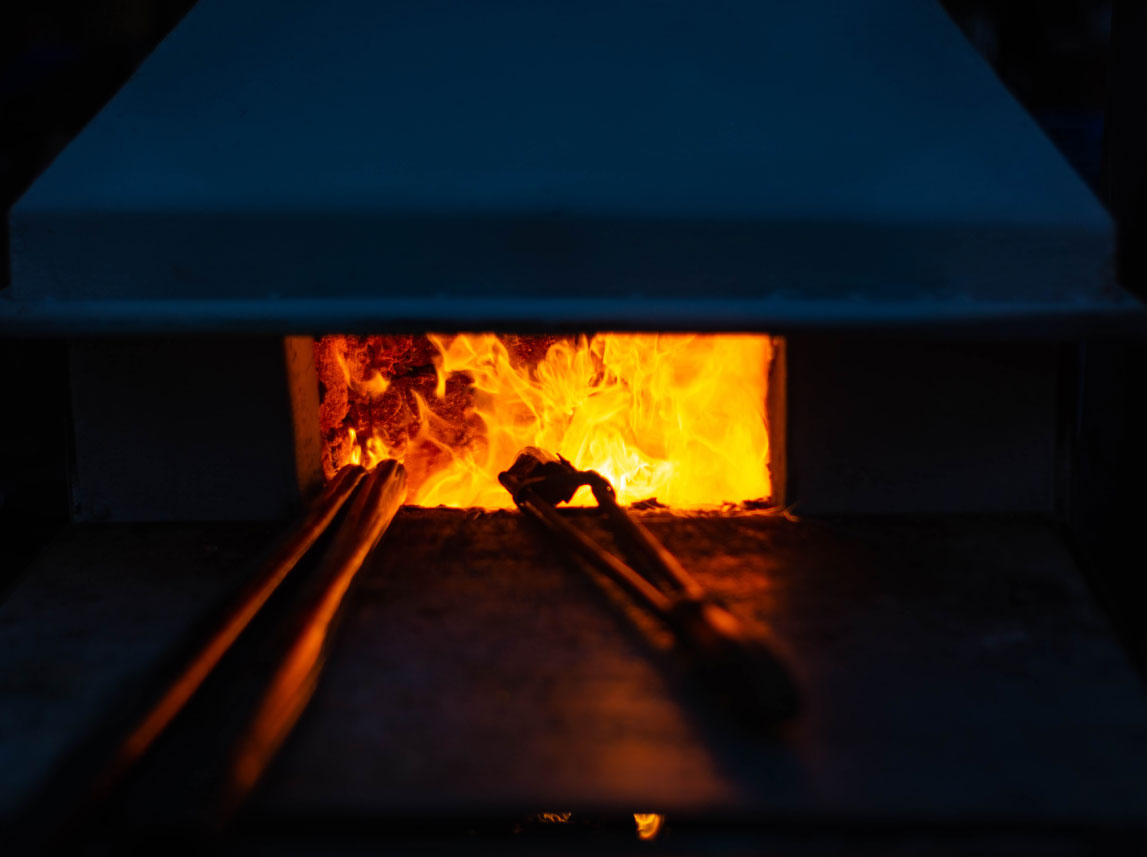
20 Mar A Discussion of Material Pre-Treatment as a Function of Performance
Grain refinement is a noted benefit on gear tooth forming, heat treatment, and PHT finishing and recent advances further reduce induced stress on parts.
This article is not intended to go deep into the metallurgy of pretreatment, nor will it discuss the nuances of the machining or heat treatment of alloy steels typical of gear steel. I will try to develop a logic assessment of the benefit, thus justify the cost adder of buying material in an optimum condition prior to any machining. The old saying “you only get out as good as you put in” applies to gears as well. We know this from our efforts to develop the best geometry for the application, or microgeometry to address noise (NVH) issues or even material and process specification to reduce cost. Preparation of a material prior to use takes many forms; some are surface preparation prior to coating (e.g. plating or painting, etc.) or the task may entail creating a surface finish that promotes the next step manufacturing process such as the correct surface texture for a press fit or plating through plasma-transferred wire arc (PTWA, basically the process involves blowing a fine mist of molten steel at high speed onto a precisely defined ‘rough’ surface and then honing that surface into a perfect cylinder bore). This article discusses the benefit of grain refinement on gear tooth form machining, heat treatment, and PHT finishing (i.e. grinding and/or super-finishing).
Grain refinement theory is based on the relationships between grain size and nucleate particle size and potency, nucleate density, and the constitution of the alloy. It is an important material strengthening mechanism because it increases both fracture toughness and strength at low temperature. As an example of the benefit of grain refinement, we can look to the finite element method (FEM). The objective of the FEM is to discretize the solid model of the part to be analyzed into small pieces and then solve a series (generally a very large number of) simpler equations and sum the individual results back into a predictive model of the original body. Taking the discussion of this technique a bit further, the number, size, and shape of each element directly relates to the convergence of the model to an accurate solution in a reasonable amount of computational time. The ‘solution’ of a finite element analysis (FEA) requires convergence of all the individual element models to within a specified limit. Convergence thus requires that there is only a small difference in strain energy between the individual element solutions, and that the difference is less than the requisite convergence limit. The variation in strain energies is only manifest at the element boundaries (or grain boundaries in actual materials) as discontinuities (the interior of the mathematical element model is considered continuously varying). Differences in the solved for strain energies then constitute the strain, thus stress, and finally deflection of the entire model. The larger the difference in discontinuity of strain energy at any given point along the element boundary, the less accurate the solution.
Now let us map this over to an actual alloy steel material. It is common knowledge that materials with smaller grains have greater ratios of surface area to volume of the crystal, which means a greater ratio of grain boundary to dislocations. Grain boundaries are ubiquitous defects in metallic alloys governing a range of properties, such as tensile strength, fatigue resistance, fracture toughness, strain hardening, brittleness, conductivity, or corrosion. Grain-boundary segregation of alloy (impurity) elements, such as phosphorus, arsenic, antimony, and others, decreases the grain-boundary cohesion, which can substantially increase the temperature of the ductile-brittle transition in low-alloy structural steel.
A grain is a single crystal, within which the atomic lattice and its orientation are continuous. Adjacent grains of the same phase with different orientations are separated by an immaterial surface called a grain boundary. The two crystal lattices extend regularly right up to the boundary. Grain boundary dislocations are linear defects with all the characteristics of lattice dislocations. The more grain boundaries that exist, the higher the strength becomes. Why, the boundary between two grains (grain boundary) is a defect in the crystal structure of the alloy and is created during the cooling process from liquid to solid. Grain boundaries are associated with a certain amount of energy, referred to as strain energy within the lattice. The more grain boundaries and the larger width or gap between these grain boundaries, the more energy is stored in the metal. We also know that heat-treat distortion is the release of strain energy (induced stress due to multiple sources such as shearing during the cutting process, cold working the metal prior to heat treat, etc.) so the more stored energy to be released, the greater the distortion.
The smaller the grain size and grain boundary dissimilarities, the stronger the material. Slowing the movement of grain dislocations also strengthens the material. There are any number of ways to reduce the dislocation movement. These include alloying and strain hardening. Smaller grains have greater ratios of surface area to volume, which means a greater ratio of grain boundary to dislocations. The more grain boundaries that exist, the higher the strength becomes.
Recent innovations in grain refinement have been related to semisolid processing where control of melt temperatures and the use of melt shearing technologies have been able to improve the properties of castings. Ultrasonic treatment and electromagnetic stirring are attracting renewed interest and may provide a way to grain refine alloys without the use of grain refiners. We also use a technique of H-band grain refinement. The “H” indicates the material meets hardenability according to ASTM A304. Grain-boundary strengthening (or Hall–Petch strengthening) is a method of strengthening materials by changing their average crystallite (grain) size. It is based on the observation that grain boundaries are insurmountable borders for dislocations and that the number of dislocations within a grain influence how stress builds or accumulates in the adjacent grain, which will eventually activate dislocation sources and thus enabling deformation in the neighboring grain. So, by changing grain size one can influence the number of dislocations concentrated at the grain boundary and thus improve yield strength. For example, heat treatment after plastic deformation and changing the rate of solidification are ways to alter grain size. Grain refinement, also known as inoculation, is the set of techniques used to implement grain boundary strengthening in metallurgy. The specific techniques and corresponding mechanisms will vary based on what materials are being used.
The most recent advances are addressed using physical grain refining processes such as stirring below and above the melt temperature, the use of ultrasonication, electromagnetic stirring, and pulsed magneto-oscillation. We also use cryogenic treating to effect similar results. Cryogenic hardening is a cryogenic treatment process where the material is cooled to approximately −185°C (−301°F), usually using liquid nitrogen. This treatment is being used on tool steels, high-carbon, high-chromium steels, and in some cases to cemented carbide to obtain excellent wear resistance, but this is usually saved for after final machining. We want to induce similar effects prior to machining to reduce the induced stress in the part prior to heat treatment.
As with all things engineering, the more you know, the more you need (want) to know. So, in that context, this article leaves a lot out of the full discussion. The intent was to help bridge the gap between the point of view of a metallurgist, a chemist, and a gear designer, as it applies to pre-treating alloy steels typical of those used for gears.

Sorry, the comment form is closed at this time.